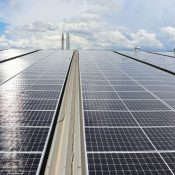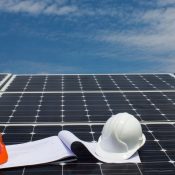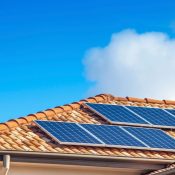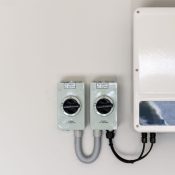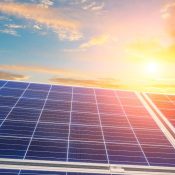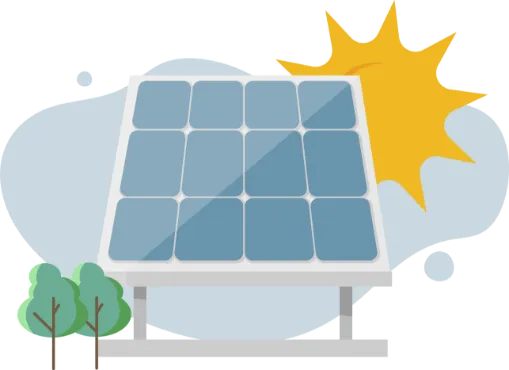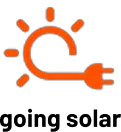What Are the Main Disadvantages of Solar Energy?

Are you considering installing solar panels at your home or business? You’ve undoubtedly heard about the benefits of solar energy, but what about its limitations? Understanding both sides of the coin is critical before making a significant investment.
This article will delve into “What are the main disadvantages of solar energy?” Although Going Solar is a staunch advocate for renewable energy, we believe in equipping our customers with the full picture to help them make the best possible decision.
1. High Upfront Costs
One of the most prominent hurdles potential solar users face is the high initial investment. The cost of solar panels, installation, and additional equipment, such as inverters and batteries, can be a significant financial burden for many households and businesses. Although the potential for significant savings in energy costs over the long term is substantial, the initial outlay is enough to deter many potential users.
However, we understand these challenges at Going Solar and strive to make solar energy accessible to all. We offer various financing options and incentives to help alleviate these initial costs. Furthermore, the government provides various schemes and tax benefits to encourage the adoption of renewable energy sources, which can help offset these initial expenses.
2. Weather Dependency
Solar energy systems, while efficient, are heavily reliant on weather conditions. Even though solar panels can generate electricity on cloudy or rainy days, their efficiency can drop significantly under such conditions. In a country like Ireland, where cloudy skies and rainy days are not uncommon, this can impact the consistency of energy production. Consequently, solar power can be less reliable during certain periods, disadvantaging users who require a steady electricity supply.
That said, technological advances in solar energy systems have led to the development of more efficient solar panels and batteries that can store surplus energy produced during sunny periods. These storage solutions can provide electricity during less sunny periods, ensuring a consistent power supply. However, these additional components can add to the overall cost of the solar energy system.
3. Large Space Requirements
Solar panel installation necessitates a substantial amount of space. The number of solar panels required for an efficient system depends on your energy needs. Depending on these requirements, a rooftop may not suffice, necessitating additional ground space. This can be a significant constraint, particularly in urban areas where space is often limited.
At Going Solar, we provide comprehensive consultations to assess your space and energy requirements. Our experts can design a custom solar power system that maximises your available space and meets your energy needs. Furthermore, advances in solar technology have led to the development of smaller, more efficient panels, allowing for more flexible installation options.
4. Roof Suitability
Not all rooftops are suitable for solar panel installations. The suitability of your roof for solar panels can depend on various factors. These include the size, angle, and structural integrity of your roof. In addition, the material used in your roof construction can impact the feasibility of solar panel installation. Roofs constructed with fragile materials may not be able to support the weight of solar panels, and changes might be required.
At Going Solar, we perform thorough site inspections to assess the suitability of your roof for solar panel installation. When a roof is unsuitable, our experts can suggest alternative solutions. This could include ground-mounted systems or smaller installations combined with energy-efficiency measures to help reduce your overall energy consumption.
5. High Costs of Energy Storage
While generating your own electricity is certainly appealing, solar power systems have a notable limitation – the need for energy storage. Solar panels produce energy during daylight hours, meaning you’ll need to store excess power during night or overcast periods. However, energy storage systems, such as solar batteries, can be costly additions to your solar setup.
While this adds to the overall expense of your solar installation, integrating a storage solution allows you to maximise the use of the energy you produce. Plus, advancements in battery technology are continuously improving storage capacity and bringing costs down. Furthermore, some energy providers offer grid-tied systems that allow you to sell excess power back to the grid, providing another avenue to offset costs.
6. Potential Decrease in Property Aesthetics
The aesthetic impact of solar panels is subjective. While some property owners appreciate the modern appeal that solar panels lend to a building, others may feel they detract from their property’s aesthetics. The large, often black panels can stand out, particularly on traditionally styled homes or buildings, potentially impacting the overall look and feel.
However, new designs and technologies are increasingly addressing the aesthetic factor. Solar panels are now available in various styles, including those that mimic the look of traditional roofing materials. Going Solar can guide you towards a solar solution that meets your energy needs and complements your property’s aesthetic.
7. Complications in Moving Systems
Solar energy systems are installed to be a long-term energy solution, and as such, they are not easily movable. If you anticipate relocating in the future, it can pose a significant challenge to take your solar panel system with you. The process of uninstalling, transporting, and reinstalling solar panels can be both expensive and complex.
On the positive side, a solar energy system can add considerable value to your property. If relocation is on the horizon, having a solar power system could make your property more appealing to potential buyers, who would benefit from reduced electricity costs. It’s also worth considering that many solar companies, Going Solar included, offer services to assist with system relocation if necessary.
8. Environmental Impact of Manufacturing
Although solar panels are synonymous with green, clean energy, the manufacturing process of these panels is not without its environmental impact. The production process is energy-intensive and often involves using hazardous materials, which can contribute to pollution if not managed properly. In addition, the raw materials required for solar panel production, such as silicon and silver, need to be mined, which can cause environmental degradation.
However, it’s important to note that the environmental footprint of solar panel manufacturing is continually being reduced. Innovations in production processes are helping to decrease energy usage and waste. Additionally, compared to the ongoing pollution caused by fossil fuel energy sources, the overall environmental impact of solar panels is substantially lower.
9. Complexity of Solar Power Regulations
Solar power regulations and policies can vary significantly, creating another potential hurdle for potential solar power users. Depending on your location within Ireland, the regulatory requirements, permits, and potential incentives available to you may differ. The process of understanding and complying with these regulations can add to the overall challenge of adopting solar power.
At Going Solar, we deeply understand the regulatory landscape for solar installations. Our team stays up-to-date with the latest policy changes and incentives, and we can guide you through the necessary steps to ensure your project is compliant and takes full advantage of available incentives.
10. Need for Regular Cleaning and Maintenance
Solar panels, while generally requiring low maintenance, need regular cleaning to ensure optimum performance. Various factors, such as dust, dirt, snow, and bird droppings, can accumulate on the panels over time, reducing efficiency. Thus, regular cleaning and occasional maintenance add to the long-term cost of owning a solar power system.
Nevertheless, regular maintenance ensures the longevity and efficiency of your solar panels, and the costs are typically far lower than the maintenance costs associated with other forms of energy generation. Some solar companies, like Going Solar, even offer maintenance services, taking the hassle out of your hands and ensuring your system always operates at its best.
11. Lengthy Payback Period
Despite the long-term financial benefits, solar power systems have a longer payback period due to the high initial costs. Depending on your energy usage, location, and the size of your solar system, the payback period can be several years, possibly even a decade or more. This may not be ideal for everyone, particularly those who may not stay in the same property long enough to see the financial returns.
However, it’s essential to consider the broader picture when assessing the payback period. The lifespan of a solar power system typically exceeds 20 years, meaning that once you’ve passed the initial payback period, you’ll essentially be generating free electricity. Additionally, rising energy costs could reduce the payback period significantly.
12. Energy Efficiency Limitations
Although solar technology continues to evolve, current solar panels only have an efficiency rating of 15-20%. This rating refers to how well the panels can convert sunlight into electricity, meaning a large proportion of sunlight cannot be utilised. Therefore, more panels are required to meet higher energy needs, increasing the installation cost and space requirements.
Despite these limitations, it’s worth noting that efficiency rates are steadily improving as new technologies are developed. Also, while a 20% efficiency rate may seem low, in practical terms, it’s often more than sufficient to power a home or business, especially in areas with good sun exposure.
13. Energy Wastage
One of the drawbacks of solar energy is the potential for energy wastage. This happens when a solar power system produces more energy than can be used or stored. The excess energy goes to waste in off-grid systems without an energy storage solution. Even in grid-tied systems, while excess energy can be fed back into the grid for credit, feed-in tariffs are often less than what you pay for electricity, leading to financial inefficiencies.
However, carefully planning and designing your solar system to match your energy consumption can minimise energy wastage. Smart solar inverters and energy monitors can help you better understand and manage your power usage to maximise your solar investment.
14. Interconnection Process
Connecting your solar power system to the electricity grid can sometimes be complicated. Each energy provider has different rules and procedures for interconnection, which can take some time to complete. Errors or delays in the interconnection process can cause frustration and potentially interrupt your solar energy supply.
But with a professional solar installation company like Going Solar, you can sit back and relax while we handle the interconnection process for you. Our experienced team will ensure everything is done correctly and efficiently, keeping you informed every step of the way.
15. Negative Impact on Natural Habitats
Large-scale solar installations can sometimes have a negative impact on natural habitats. These solar farms often require clearing large areas of land, which can disrupt local ecosystems and harm wildlife. This is especially a concern in rural or undeveloped areas, where habitat disruption can be significant.
Nonetheless, environmental considerations are a key part of the planning process for large solar installations. Measures can be taken to minimise the impact on natural habitats, such as choosing locations with low ecological value or using elevated panels that allow vegetation to grow underneath.
Now that you have a balanced view of solar energy, understanding its limitations and advantages, you’re better equipped to make an informed decision.
Ready to Go Solar?
Have the disadvantages of solar energy got you second-guessing? Don’t let them deter you. Instead, let them guide you in making a well-informed decision. Going Solar is here to help you every step of the way. Our experts can provide more insights, answer any questions you have, and guide you towards a solution that suits your specific needs. Contact us today, and let’s discuss how we can help you harness the power of the sun efficiently and effectively. Remember, the future is brighter with Going Solar!
Planning a switch to solar energy?
Contact Going Solar now and Get Free Advice & Quote Within Minutes!
Frequently Asked Questions
Contact Going Solar Now!
Joe Brennan
Founder @ Going Solar
Joe Brennan, the founder of Going Solar, is dedicated to making solar power mainstream in Ireland and meet SEAI objectives. With a focus on affordability and sustainability, he is bringing renewable energy solutions to homes, reducing costs & environmental impact.
Recent Posts

